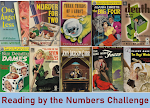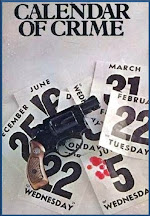Somehow I missed last week...so this is a run-down of two weeks' worth of books. Still one book behind on Goodreads,
after another brief moment of the little ticker telling me that I was "on
track." Read, Bev, read!:
Books Read (click on titles for review):
The Temple of Death by A. C. & R. H. Benson
The Secret of the Old Clock by Carolyn Keene
The Dreadful Hollow by Nicholas Blake
The Haunting of Hill House by Shirley Jackson
Death Knocks Three Times by Anthony Gilbert
The Mystery Lovers' Book of Quotations by Jane Horning
The Yellow Violet by Frances Crane
The Secret of the Old Clock by Carolyn Keene
The Dreadful Hollow by Nicholas Blake
The Haunting of Hill House by Shirley Jackson
Death Knocks Three Times by Anthony Gilbert
The Mystery Lovers' Book of Quotations by Jane Horning
The Yellow Violet by Frances Crane
Currently Reading:
The Prayer of Jabez by Bruce Wilkinson: takes readers to 1
Chronicles 4:10 to discover how they can release God's miraculous power
and experience the blessings God longs to give each of us. The life of
Jabez, one of the Bible's most overlooked heroes of the faith, bursts
from unbroken pages of genealogies in an audacious, four-part prayer
that brings him an extraordinary measure of divine favor, anointing, and
protection.
Books that spark my interest:
Foundation by Isaac Asimov
Whatever Goes Up by Bertram Millhouse
A Love Worth Giving by Max Lucado
The Haunted Doll's House by M. R. James













































